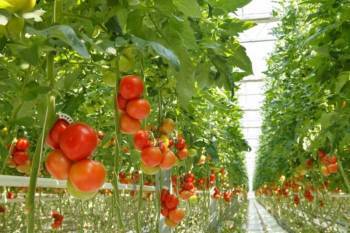MUMBAI, 29 April 2024: The Indian agricultural landscape, long dominated by traditional open-field farming, is witnessing a revolutionary shift. Indoor farming, a controlled-environment agriculture (CEA) technique, is gaining traction as a sustainable and efficient solution to the challenges plaguing conventional agriculture.
This report explores the growing importance of indoor farming in India, delves into the current state of the industry, and examines the challenges and opportunities that lie ahead.
Why Indoor Farming Matters for India
India faces a multitude of agricultural challenges:
- Land Scarcity: With a growing population, arable land is shrinking, necessitating innovative solutions to meet food demands.
- Climate Change: Erratic weather patterns and water scarcity threaten traditional farming practices. Indoor farms offer a climate-controlled environment, mitigating these risks.
- Post-Harvest Losses: India experiences significant post-harvest losses due to improper storage and transportation. Indoor farms can minimize these losses with controlled environments.
A Controlled Oasis: Benefits of Indoor Farming
Indoor farming offers a compelling alternative, addressing these challenges effectively:
- Increased Yields: Controlled environments allow for year-round production, maximizing yield per unit area compared to open fields.
- Reduced Water Usage: Indoor farms use 90% less water than traditional farming, a crucial benefit in water-scarce regions.
- Minimized Pesticide Use: Controlled environments minimize pest infestations, allowing for reduced reliance on pesticides, leading to safer produce.
- Improved Food Quality: Indoor farms provide consistent quality and improved shelf life due to controlled environments.
Current Market and Player Landscape
The Indian indoor farming industry is still in its nascent stage, but it's experiencing rapid growth. Here's a snapshot of the current market:
- Market Size: Estimates suggest the Indian indoor farming market is expected to reach USD 200 million by 2025, showcasing its rapid growth trajectory.
- Key Players: Several startups and established companies are pioneering indoor farming in India, including:
- Urban Kisaan - Leading vertical farming company focusing on leafy greens and herbs.
- Farmbox Greens - Specializes in vertical farming solutions for urban areas.
- NCR Corporation - Established agricultural company venturing into indoor farming solutions.
Global Market Share and Outlook
The global indoor farming market is projected to reach USD 40.3 billion by 2025. Here's how India can carve a niche in this burgeoning sector:
- Focus on Leafy Greens and Herbs: These high-value crops offer a faster return on investment and are well-suited for controlled environments.
- Localized Production for Urban Centers: Catering to the growing demand for fresh, high-quality produce in urban areas is a promising strategy.
- Integration with Technology: Integrating automation, data analytics, and artificial intelligence (AI) for optimized production can lead to increased efficiency and profitability.
Challenges and Considerations: A Seed Needs Nurturing
Despite its potential, indoor farming in India faces several challenges:
- High Initial Investment: Setting up an indoor farm requires significant investment in technology, infrastructure, and expertise.
- Limited Awareness: Spreading awareness about the benefits of indoor farming among consumers and farmers is crucial for market growth.
- Energy Consumption: The reliance on artificial lighting and climate control systems can lead to high energy consumption.
- Regulatory Framework: A clear and supportive regulatory framework for indoor farming is needed to encourage further investment and innovation.
Government Initiatives: Nurturing the Sprout
The Indian government recognizes the potential of indoor farming and is taking steps to promote its adoption:
- Startup Support: Programs like Startup India offer financial assistance and incubation support for innovative agricultural startups, including those focused on indoor farming.
- Research and Development: Encouraging collaboration between research institutions and private companies for developing cost-effective and sustainable indoor farming technologies is crucial.
- Focus on Renewable Energy: Integrating renewable energy sources like solar power can address concerns about high energy consumption in indoor farms.
Conclusion: A Sustainable Future Takes Root
Indoor farming presents a promising solution for India to overcome its agricultural challenges and ensure food security for its growing population. By overcoming hurdles like high initial costs and limited awareness, and by leveraging government support for innovation and renewable energy integration, India can become a frontrunner in this new age of agriculture. As the technology matures and costs become more affordable, indoor farming has the potential to revolutionize the Indian agricultural landscape, fostering a sustainable and productive future for generations to come.
Image credit: ifco.com























